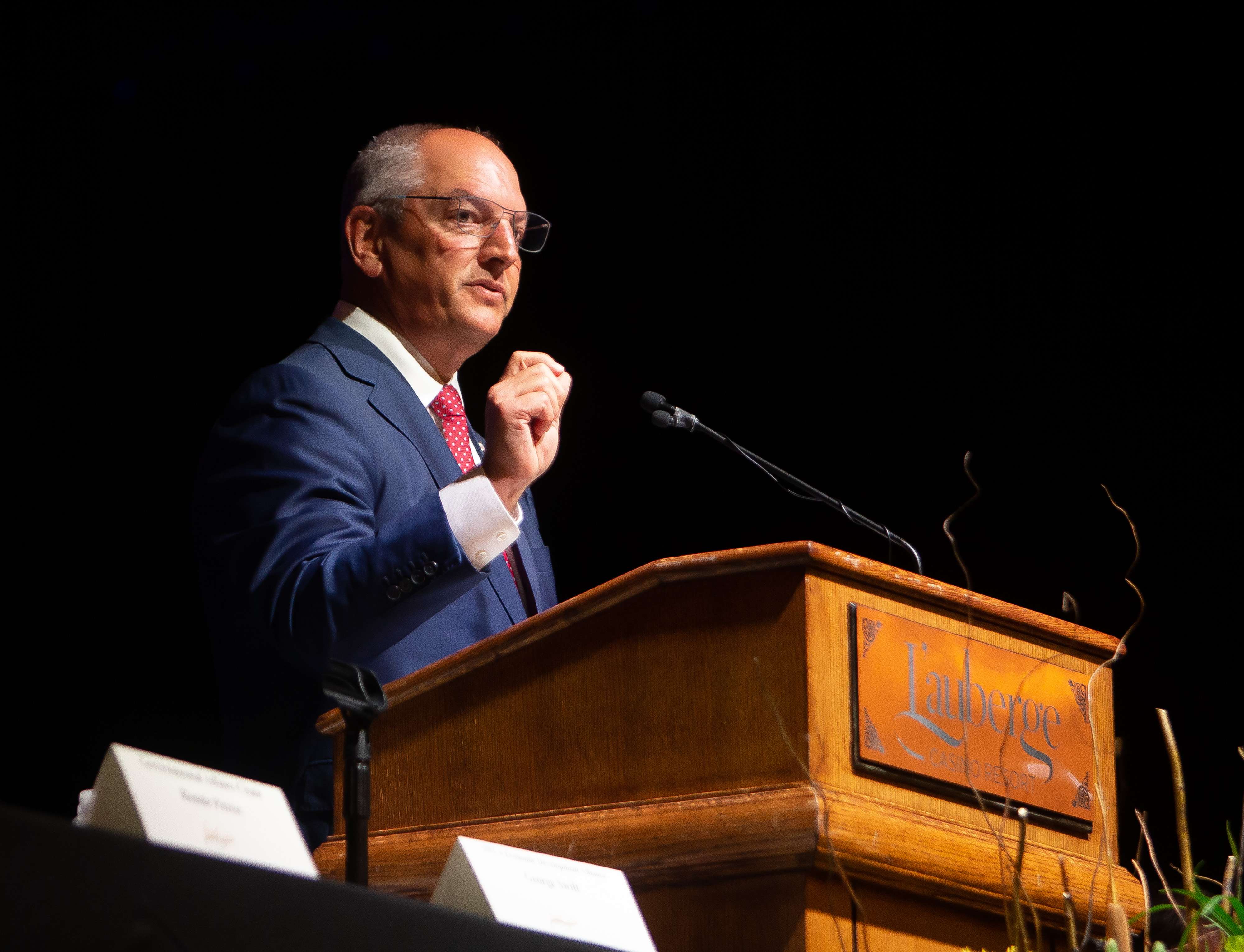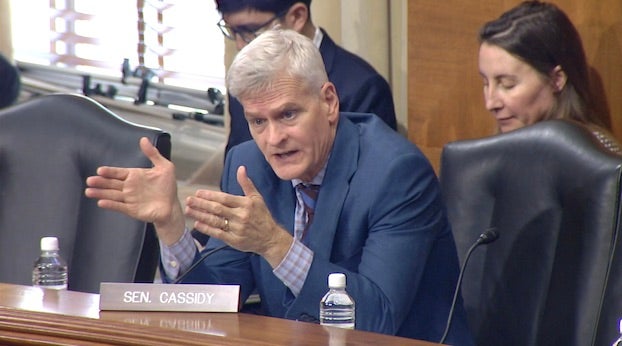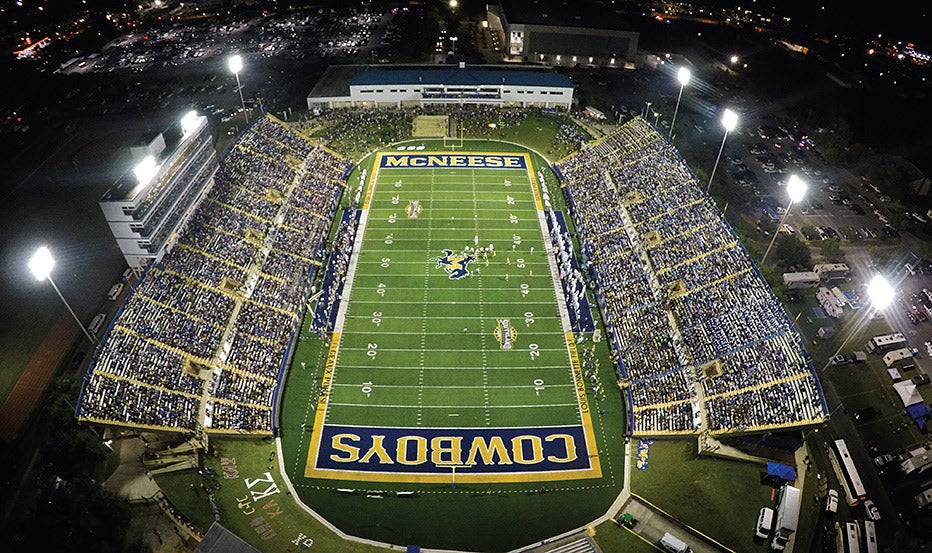Edwards: 500 orphaned wells plugged in 6.5 months of work
Published 10:07 am Wednesday, August 9, 2023

- Governor Edwards at Lauberge du Lac in Lake Charles, La., Friday, Aug. 19, 2022. (Rick Hickman/Lake Charles American Press)
Gov. John Bel Edwards and Louisiana Department of Natural Resources Secretary Tom Harris announced that contractors have plugged more than 500 orphaned well sites in the first six-and-a-half months of work funded by the Bipartisan Infrastructure Law.
“The work we’ve been able to accomplish in Louisiana using BIL funding is nothing short of transformational,” Edwards said. “We’ve plugged more than 500 orphaned wells in just six-and-a-half months of work. I want to thank Sec. Harris and his team for ensuring this important work is done quickly and efficiently, as well as Rep. Troy Carter, Sen. Bill Cassidy, and Pres. Biden for their support of the Bipartisan Infrastructure Law that made this effort a reality.”
The current count of 519 wells plugged since mid-January with the BIL funding surpasses the highest number ever plugged by the state Oilfield Site Restoration (OSR) program in a full year by 239 wells and roughly triples the average OSR full-year plugging figures over the past several years. The $25-million Initial Grant from the BIL, paired with $12.7 million in BIL funding provided by the U.S. Fish and Wildlife Service (USFWS), helped attract larger-scale contractors who normally do not bid on smaller individual projects.
Trending
The two primary contractors chosen by DNR have been working with more than a dozen crews in the field, with work expected to be continuous through October 2023.
“We had hoped the BIL funding would allow us to plug about double the average number of wells our state OSR program has plugged in recent years, which is around 160, but we’ve more than tripled that with about two months to go on the grant funding,” Harris said. “DNR staff and our contractors were very motivated early on to set a strong pace to get ahead of the game before spring weather slowed them, but weather has not been the problem we feared, and they have held a pace that could see us double our highest-ever number of orphaned wells plugged in a single year.”
Harris said he hopes that the pace and scope of the work done under this Initial Grant from the BIL will strengthen the case for increasing the amount Louisiana receives in later rounds of funding targeting orphaned wells.
The U.S. Department of the Interior (DOI) is providing the BIL funding, having awarded Louisiana a $25-million Initial Grant to address orphaned wells in the state. The BIL funding is being administered by the DOI as part of an overall $1.15 billion announced in January 2022 for states to plug and remediate orphaned wells. DOI has indicated states will receive additional phases of funding this year – though full details have not yet been announced.
In addition, the USFWS partnered with DNR to have the Louisiana OSR program use $12.7 million in USFWS BIL funding to engage state OSR contractors in plugging orphaned wells on federal wildlife refuges.
The Initial Grant is more than double the average annual amount of funding the regular state Oilfield Site Restoration, with which the state Office of Conservation has plugged an average of about 160 wells a year in recent years, depending on weather and well locations/depth and the need to draw from the fund to respond to emergencies.
Trending
Typically, orphaned well sites in Louisiana are wells designated by the Office of Conservation as not having a responsive operator, either due to the operator going out of business or being unable or unwilling to maintain their sites in compliance with state regulations. Louisiana’s orphaned well count is at about 4,500 sites, accelerated by downturns in the prices of oil and gas in recent years that put financial strains on oil and gas companies and their ability to maintain their sites or their businesses.
DOI announced the funding being awarded to Louisiana in October 2022 and DNR chose its primary contractors in December 2022, with the first well plugged on January 17, 2023 in the Caddo Pine Island Field in Caddo Parish – home to some of the densest well populations in the state, orphaned or operating.
DNR is also using the BIL funding to meet other DOI requirements – including establishing protocols and programs for methane and water quality testing and monitoring; addressing disproportionate impacts to disadvantaged communities from orphaned wells; and creating jobs to restore oilfield sites.
Orphaned well sites the state plans to be addressed with these Initial Grant contracts are primarily located in north Louisiana, a region that has a greater concentration of orphaned wells. The Office of Conservation’s Shreveport and Monroe districts contain more than 3,100 of the state’s roughly 4,500 current orphaned well sites.
Contractors interested in future contracts, as well as the general public interested in progress of DNR’s BIL initiatives, can visit www.dnr.la.gov/fedprojects to get the latest updates and information on DOI guidance, DNR activity and BIL orphaned well projects in Louisiana. For more general information on BIL projects across Louisiana, including an interactive map with projects broken down by type and congressional district, the public should go to infrastructure.la.gov.





